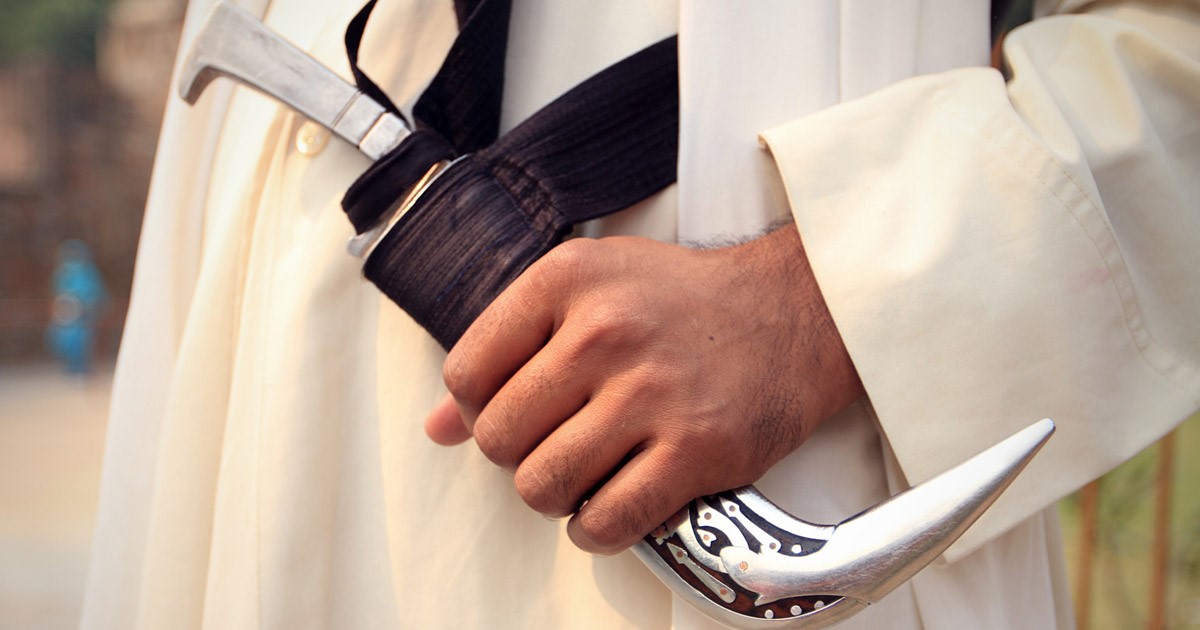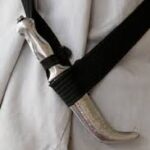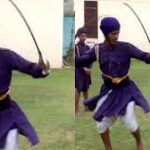The Kirpan is a peace weapon in Sikhism that are only used to protect an innocent person in distress. The root of the term “Kirpan” is Kirpa, that indicates “Mercy, grace, empathy, kindness,” and the secondary component is Aan, that indicates “Honor, grace, dignity.” As a result, the word stands for “the dignity and honour of compassion, kindness, and mercy when used as a whole.”
The kirpan is usually described as a sword or a small sword, even though it is, but that definition is very far from the kirpan’s role as to be inaccurate. The kirpan is a religious piece similarl to a Christian cross, a Jewish Star of David, or an Islamic hijab in the Sikh religion, with one important difference: it is not obligatory.
“As among the five k’s, the kirpan is significantly beyond a spiritual decoration.” It is a mandatory element of the Khalsa Sikh’s identity and cannot be equated to a cross that a Christians could choose to don. For a Khalsa Sikh, not carrying the kirpan at any time of day or night is a grave violation.”
The kirpan serves a dual purpose: it serves as a defensive weapon and it serves as a symbol. It is a physical manifestation of “Ahimsa,” or nonviolence. The notion of ahimsa is to actively discourage violence rather than to merely stand by and watch as it occurs. To that aim, when all other options have failed, the kirpan is a tool to utilise to avert violence against a helpless person. The kirpan symbolises the ability of truth to cut through deception. It’s where the enlightened mind meets the cutting edge.
A baptised Sikh, also called as a Khalsa Sikh, is a “Sant-Sapie” – a Saint-Soldier, who is both a saint and a warrior. To fulfil this requirement, one must first has to become saint, then a military. As a saint, one would have to have complete control over one’s inner vices and be able to indulge oneself in the SGGS’s five attributes at all times. Only then may a Sikh join the army. The Khalsa is also known as “Akal Purakh de fauj,” or “Army of God.” Guru ji stated that the Khalsa was an army of God whose mission was to shield all the individuals of God.
The kirpan is one of five articles of faith known as the 5Ks, and is donned by both males and females who have been initiated (Amritdhari). Sikhs don them to remind themselves of their faith’s precepts, such as justice, charity, integrity, sincerity, and equality. It’s these articles of faith:
Kesh : Unshorn hair symbolises reverence for God’s will, and is always covered by a keski or dastar (turban)
kangha : a wooden comb that symbolises self-discipline; when worn in the hair, it urges the wearer to get rid of what is ethically unsuitable;
kara – an iron or steel wristband; the circle represents God’s oneness and eternity, as well as the use of one’s hands to serve humanity;
kachhera – cotton underwear that symbolise devotion and excellent moral character;
kirpan: It is a stylised portrayal of a sword that must be sheathed, wrapped in a fabric belt, and worn beside the body; it represents a Sikh’s duty to fight injustice.
Kirpans must be constructed of iron or steel, and many are between 15 and 22 cm (6-9 inches) in length, though this varies based on the wearer’s tastes. The hilts and sheaths on some of them are ornate and exquisite. A cloth belt must be used to keep them in place (called a gaatra). The kirpan is kept close to the body by wearing the gaatra all across torso.
Laws and legalities on Kirpan
Sometimes police personnel may mistakenly conclude that Sikhs wield the dagger as a lethal weapon. There is an exception to the Criminal Justice Act 1988’s prohibition on carrying objects with points or blades if the individual is possessing the item for religious purposes. The Prevention of Crimes Act of 1953, on the other hand, contains no specific exemption. The individual who was in possession of the offensive weapon will have to declare that they had a good reason. The implication is that wearing the Kirpan for religious purposes falls under this group.
In practise, Sikhs who wear the Kirpan frequently just carry a little knife that could be classified as ornamental instead of the original, which is compliant with their religion.
Regulations in the United Kingdom
Everybody can carry a sword longer than 3 inches for religious, culture, or work-related purposes under the Criminal Justice Act 1988 (section 139) and Criminal Justice 1996 (sections 3 and 4). The Sikhs’ right to carry the Kirpan is protected by the Criminal Justice Act and the Religious Discrimination Act of 2003.
Canada’s rules and regulations
The Supreme Court of Canada ruled in Multani v. Commission scolaire Marguerite Bourgeoys in 2006 that prohibiting the use of the kirpan in a school setting violated Canada’s Charter of Rights and Freedoms. The problem began when a 12-year-old pupil dropped a kirpan measuring 20 cm (8 inches) in length at school. Parents and teachers were worried, and the child was ordered to attend school underneath police observation until the court decision had been made.
United States of America regulations
Kirpan Has Been Recognized “To be a Sikh is to wear a Kirpan – it is that simple,” a historic Ohio court judgement stated. – Hamilton County, Ohio Court of Appeals Judge J. Painter.
For Sikhs in the United States, 1997 was a watershed moment. The Kirpan was recognised by the Court of Appeals of Ohio in the matter of the State of Ohio vs. Dr. Harjinder Singh, and Dr. Harjinder Singh of Cincinnati was released from any penalty. Judges J. Gorman, P.J. Doan, and J. Painter handed down the decision on December 31, 1996. While rules, regulations, and court decisions will certainly change over time, the judges’ clear statements in this instance are noteworthy.








